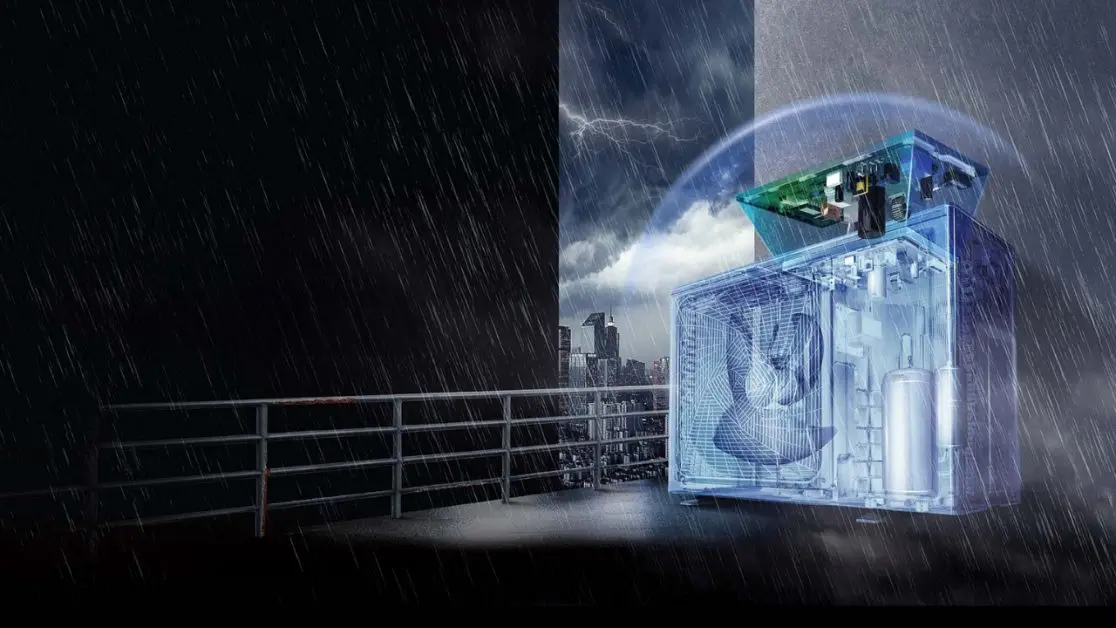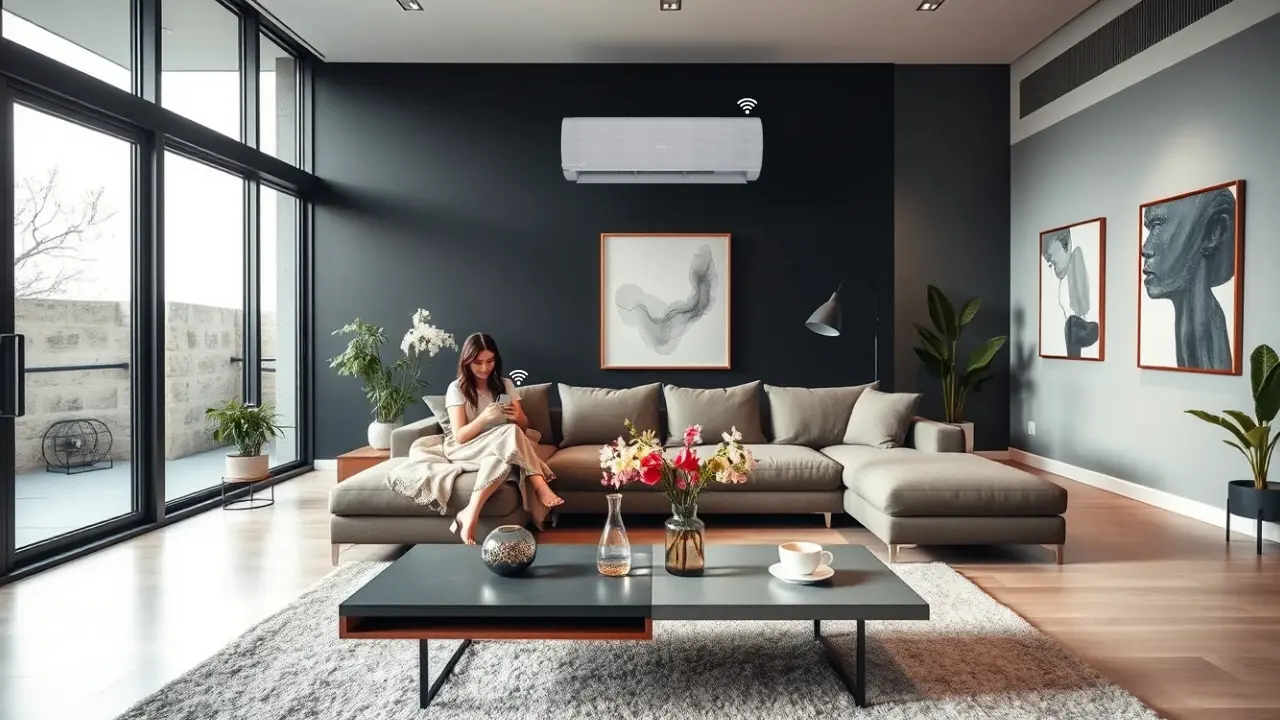The rising temperatures and increasing energy costs are making Energy Efficient home cooling a necessity.
Acs designed for energy efficiency can help maintain comfortable temperatures while reducing electricity bills.
Imagine enjoying a cool, comfortable home, knowing you’re also saving money and doing your part for the environment. Choosing the right air conditioner can make this a reality.
Let’s take a look at the key features that make an air conditioner energy-efficient. We’ll explain them simply, so you can make an informed choice and find the best cooling solution for your home.
Advanced DC Inverter Technology

A technology based on inverters defines the core feature that makes an air conditioner energy-efficient. DC inverter technology enables the compressor to modify its speed based on thermal demands, surpassing basic non-inverter AC operations. This results in:
- Lower power consumption
- Reduced temperature fluctuations
- Enhanced compressor lifespan
The HEXA Inverter operates as an energy-efficient, high-performance inverter that provides 65% additional efficiency while increasing its operational capabilities.
Supersonic Cooling and Rapid Temperature Control
Efficient AC unit design enables fast cooling while avoiding unnecessary power wastage. Temperature regulation within fractions of a second through modern technology leads to lower compressor workload and decreased energy usage. The 20X Faster Cooling technology in air conditioners quickly delivers cooling effects without excessive power consumption.
Intelli Convertible Modes (7-in-1)
The adaptive cooling mode system allows the device to adjust its power consumption based on current room requirements. Users can optimize energy efficiency by selecting from multiple convertible operating modes. Key benefits include:
- The AC power system adapts its consumption based on the number of people in the room.
- Cooling operations reduce during normal weather to save power efficiently.
- Energy efficiency increases while maintaining comfort standards.
Complete Indoor Wet Wash and Frost Self-Clean
The accumulation of dust and bacterial deposits in AC systems gradually reduces equipment efficiency while increasing operational workload. The Complete Indoor Wet Wash mode in energy-efficient air conditioners provides 99.9% effective sterilization. This feature removes dust, bacteria, and mold, ensuring the system maintains its operational efficiency.
Hyper PCB: Ensuring Stability and Durability

Energy-efficient air conditioning units utilize a durable structure that safeguards longevity while ensuring uninterrupted system reliability. The Hyper PCB (Printed Circuit Board) enhances energy efficiency through:
- Reinforced durability measures embedded within the system architecture.
- Stability during voltage fluctuations, ensuring uninterrupted operation.
- Efficient power distribution, leading to lower electrical consumption.
Long Air Flow for Even Cooling
Energy savings are not the only factor in air conditioning; proper space temperature distribution is essential. Long Air Flow technology in ACs ensures uniform ventilation across rooms, allowing users to set their thermostats at higher temperatures, ultimately aiding energy conservation.
High Ambient Performance for Extreme Conditions
Effective energy-efficient cooling systems maintain maximum efficiency across varying outdoor temperatures. Air conditioning systems with High Ambient Performance provide benefits such as:
- Uninterrupted cooling without excessive power consumption.
- Reduced compressor strain, resulting in a longer lifespan.
- Lower energy costs due to optimized operational efficiency in extreme weather conditions.
Smart Sensor and Temperature Control

Smart AC devices incorporate temperature sensors that track room conditions and automatically adjust cooling operations. Notable features include:
- Auto temperature adjustment to prevent overcooling.
- Humidity sensors working alongside other sensors to enhance user comfort while reducing energy consumption.
- Eco mode, which reduces power usage during periods of low cooling demand.
Stable Performance with Low Energy Wastage
The key distinction between regular air conditioners and energy-saving ACs lies in their ability to maintain operational stability. Features that support this include:
- Perfect Sinusoidal Wave Technology, which minimizes power oscillations.
- Noise Reduction Mechanisms, preventing excessive noise while consuming low power.
- Smart Load Management, which optimizes power distribution for enhanced efficiency.
Conclusion
An energy-efficient air conditioner provides financial and environmental benefits due to its cost-saving capabilities. These improvements stem from the integration of DC inverter technology, rapid cooling capabilities, convertible modes, long airflow, high ambient performance, and smart controls.
Dependable energy-saving cooling solutions are available at Haier India, offering advanced engineering in their air conditioners. Haier AC products deliver superior room cooling performance while reducing electricity consumption and extending operational lifespan.
Experience the power-efficient cooling systems of Haier India at their air conditioner showroom, featuring futuristic cooling technology with maximum efficiency.

